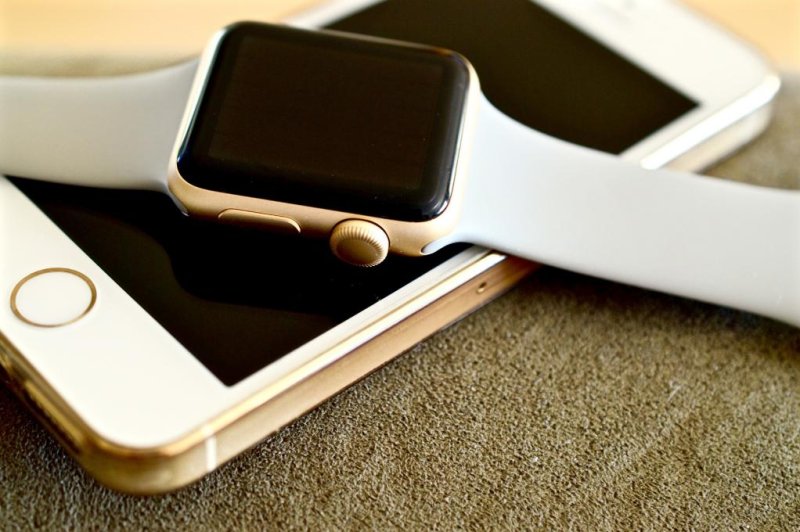The Apple Watch is among the devices that measure motion. A study found these wearable devices can predict older participants' risk of falling, which could be used to help prevent future falls. Photo by ErikaWittlieb/
Pixabay
July 12 (UPI) -- Wearable devices with motion sensors can predict older participants' risk of falling, according to a study.
Researchers at the University of Illinois in Urbana-Champaign found that measuring unsteadiness in standing and walking can predict the most common injury among adults 65 and older. Their findings were published Wednesday in npj Digital Medicine.
Three million older people are treated in emergency departments for fall injuries each year, according to the Centers for Disease Control and Prevention. That includes at least 300,000 older people hospitalized for hip fractures, of which 95 percent are caused by falling.
Older and young people fall for different reasons. Younger people misjudge something, such as a slippery surface, and older adults are unstable, and lose balance when walking or when standing up and sitting down.
"Our prediction showed that we could very accurately tell the difference between people that were really stable and people that were unstable in some way," Dr. Bruce Schatz, head of the Department of Medical Information Science in the School of Medicine, said in a press release.
Schatz analyzed data from a pilot study that is part of the National Institute of Health's Women's Health Initiative.
Sixty-seven women, all over the age of 60, were asked about the number of falls they had experienced in the previous year and had their walking ability tested. Participants wore a small wearable device with motion sensors, called an accelerometer, that measured their walking patterns for one week.
Data extracted automatically from the devices predicted falls with an average of 73.7 percent accuracy and 81.1 percent for precision, the researchers report, noting that accelerometer-based measures of gait are potentially useful in screening older women for fall risk.
Schatz envisions everyone over 60 having a phone app that constantly records their motion. The app could notify the user or their doctor if walking becomes unstable. Then, they could undergo preventive exercises, he added.
"I work a lot with primary care physicians, and they love this [idea], because they only see people after they start falling," Schatz said. "At that point, it's already sort of too late."
He predicts older adults' quality of life improves with predictive medicine. But patients need to learn about the advantages.
"There is a solution which is completely workable and isn't very expensive, but requires different behavior," Schatz said. "That message is not getting out."















